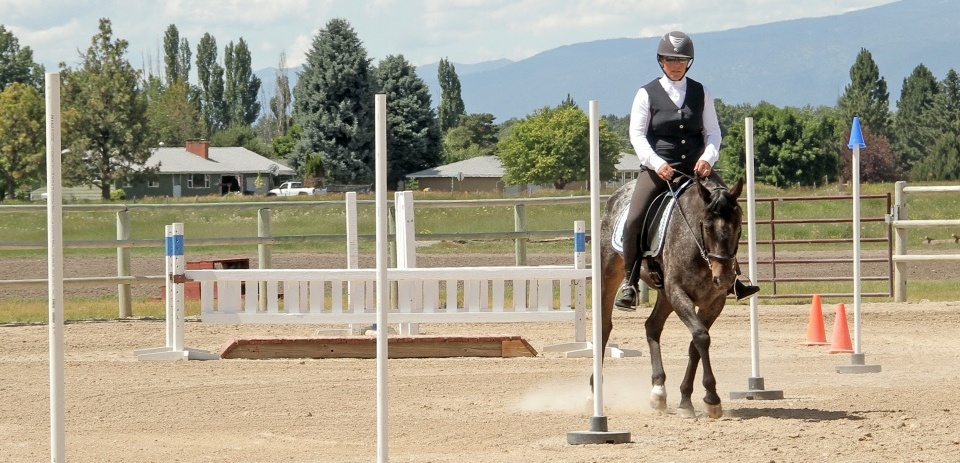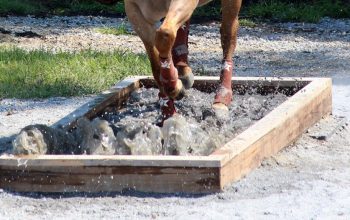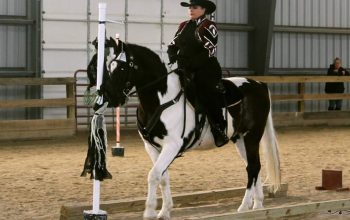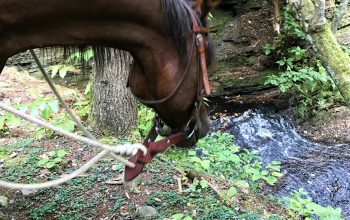By Julie Alonzo
WE United President Elect
www.weunited.us

Well-known for the diversity of horses and riders that are drawn to its allure, working equitation is a sport that rewards versatility of horse and rider. The sport’s four phases (Dressage, Ease of Handling, Speed, and Cattle) require complementary but different skills.
True working equitation champions display the ability to work in harmony within the tight constraints of a 20 x 40 meter short dressage court. They demonstrate the aptitude to negotiate obstacles that require them to perform numerous transitions up and down, to make symmetrical circles of varying diameters, to stand square and immobile while their rider opens gates, rings bells, and raises objects above shoulder-height, to rein back and sidestep, all with relaxation and proper engagement through the back.

Perhaps most impressive, though, is the fact that the best working equitation mounts can go from performing the obstacles quietly and with no resistance in the Ease of Handling trial to zipping through them quickly in the Speed Trial. These same horses and riders, in competitions where the Cattle trial is offered, must subsequently show that they are able to move quietly and confidently into a herd of cattle, sort out their designated beast, and cut it away from the others and into a holding pen at the far side of the arena – all within the allotted three minutes.
The most successful working equitation competitors consciously opt to go more slowly in the Speed trial at first, only gradually increasing the rate with which they perform the obstacles as the horse demonstrates readiness to do so without sacrificing relaxation. Adding acceleration before a horse is ready is a sure recipe for decreasing performance in the Dressage and Ease of Handling trials.
These photos, from recent WE United events in Montana and Oregon, showcase both the diversity in the sport and the versatility of working equitation competitors. Enjoy!
Photographer Highlight:
Vicki Correia, of Montana Magic Photography lives in the Bitterroot Range of the Rocky Mountains in western Montana, where she specializes in dog and horse shows and events, rodeos, outdoor photography, and pet portraits.
Her photos have been published in Montana Magazine, Montana Outdoors, Rural Montana, Grit Magazine, the Great Dane Gazette, the Aussie Times, and The Missoulian newspaper, as well as official publications for organizations such as the Lewis & Clark Trail Heritage Foundation, the Lewis & Clark Bicentennial Festival, Travelers’ Rest State Park souvenir postcard, and the Missoula City Cemetery’s annual “Stories and Stones” historical re-enactment.

Vicki writes, “Over the years I’ve learned a lot about myself and how I see my world, and about photography in general. I’ve discovered that I love the play between light and shadow, I’ve learned how to create a great composition, how to “see” what the photo might look like before I press the shutter. I’ve followed all of the rules and have broken every one of them, and I’ve learned how to take photos that reveal who I am as a photographer.”
“I’ve been asked many times what my favorite subject is, and I have to answer ‘everything’. It’s true, I do shoot everything: scenery, portraits, flowers, birds, clouds, leaves, bugs, still life (not only flowers and fruit, but vegetables, food and kitchen utensils), absolutely anything and everything that is available to shoot. I find that everything I look at, I see as a photograph. Even though I don’t consciously think about it, my mind is subconsciously composing pictures. I’m rarely found without my camera, so I guess you could say that I truly do live, eat and breathe photography.”
Vicki’s work can be viewed on her website: montanamagicphotography.com






